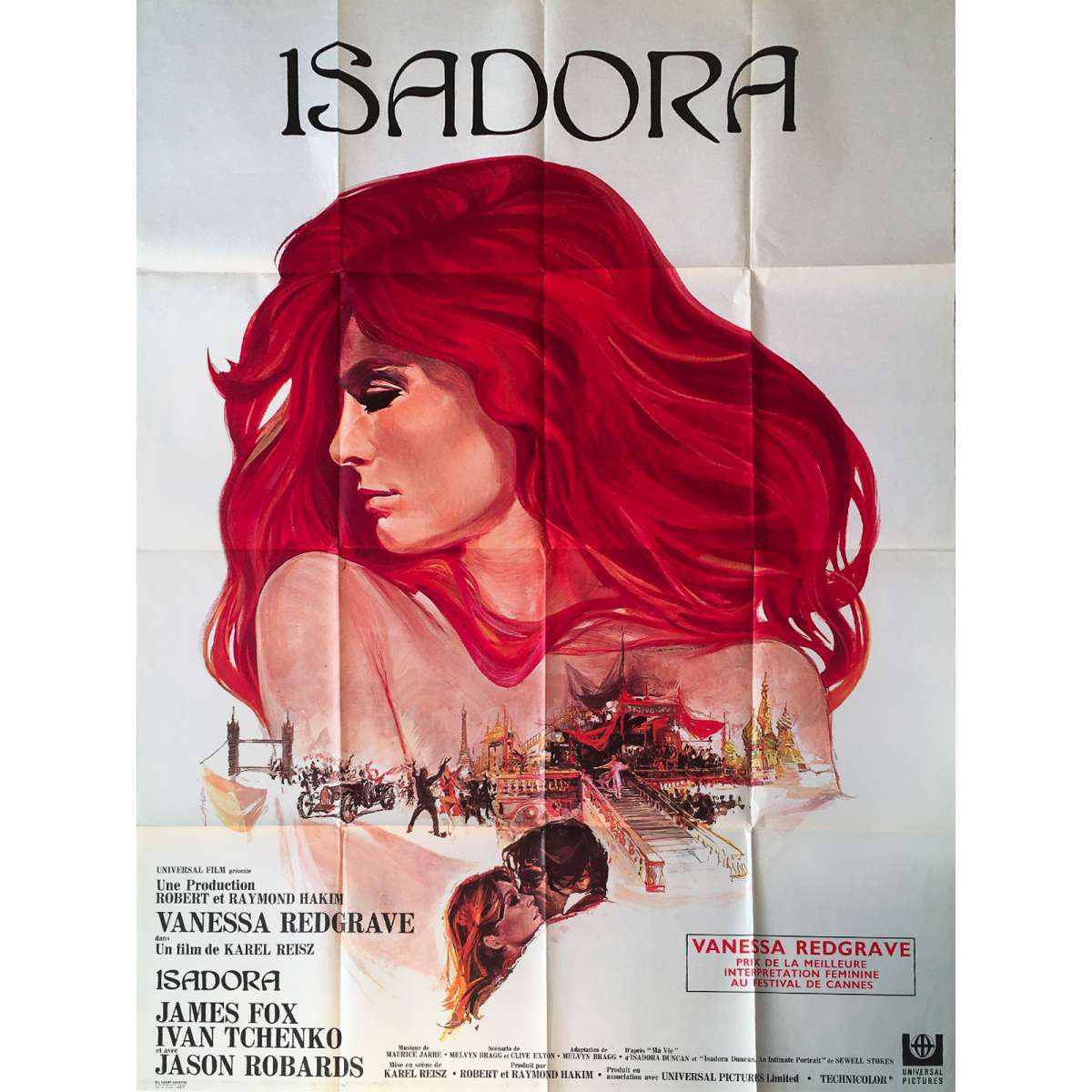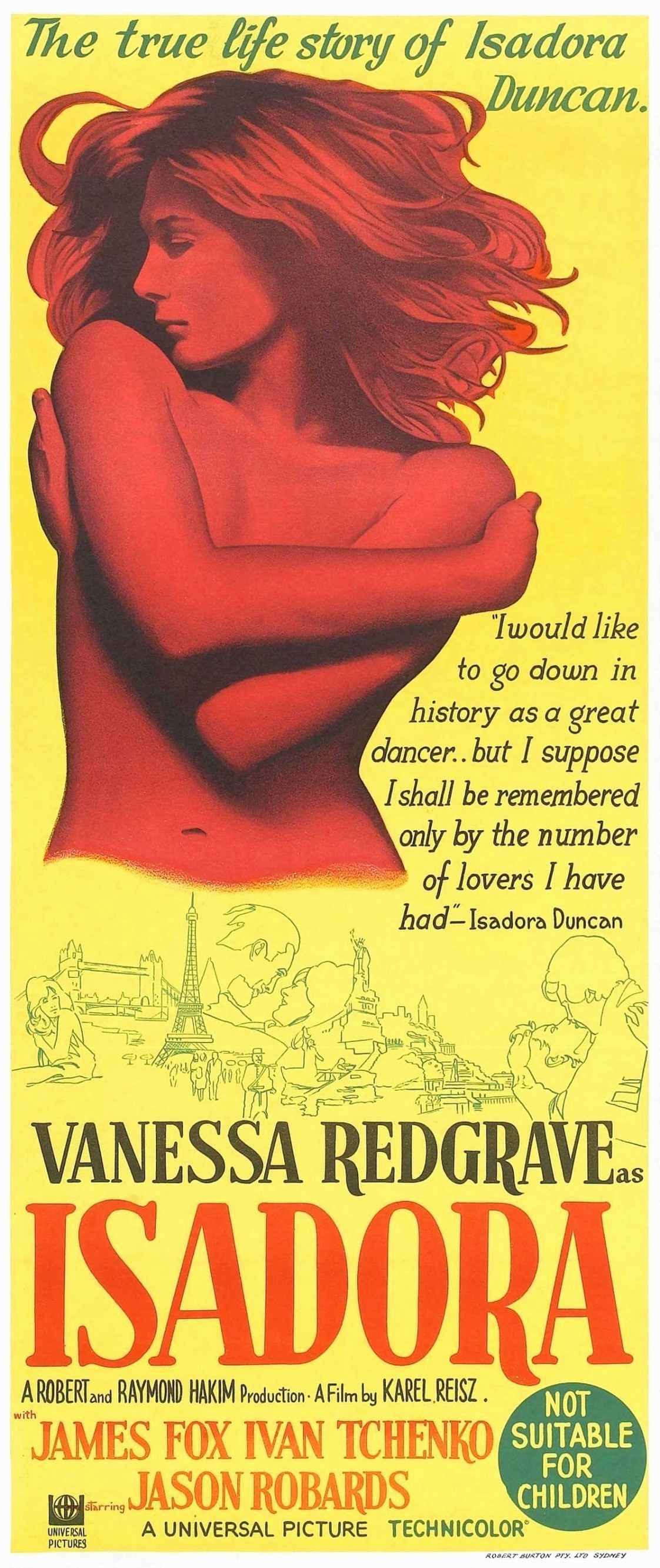


Russell presents this as a mixture of dramatised material and fantasy sequences that blend original dance numbers with footage from Leni Riefenstahl's Olympia (Germany, 1938), an ecstatic paean to the glory of the human body. The remaining hour is spent examining the same material in much greater detail, attempting to explain the motivations behind her frequently scandalous life and career while conveying both her impossible ambitions and her actual achievements. There's plenty of over-the-top exuberance at the start, a breathless montage of speeded-up images, music and quoted newspaper headlines that crams all the best-known stories about the dancer Isadora Duncan (1878-1927) into just two minutes. And if that's not anything to do with Art, let's have nothing to do with Art. By vulgarity I mean an exuberant over-the-top larger-than-life slightly bad taste red-blooded thing. But don't get vulgarity mixed up with commercialism. Discussing her performance with his biographer John Baxter, Russell might well have been summing up his whole career: It's strange that people can't reconcile vulgarity and artistry. It's easy to see why, as this portrait of a woman whose obsession with the importance of art and complete disdain for decorum chimes perfectly with Russell's own sensibility, as does Vivian Pickles' gloriously vulgar incarnation of the title character. ) also known as Isadora Duncan, The Biggest Dancer in the World), citing it as one of his favourite BBC films. Ken Russell always had a soft spot for Isadora (BBC, tx. The eccentric life and bizarre death of the dancer Isadora Duncan.


 0 kommentar(er)
0 kommentar(er)
